6 Best Nikon Wildlife Lens Picks for 2020
Animals are among both the most challenging and most rewarding subjects in photography. You’ll find few worthier themes than an elephant’s quiet strength or the whims of a monkey troupe. Taking pictures of animals puts nature’s splendor and ferocity on display while doing much to spread awareness about the dangers animals face. You need the right tools for the job, though, and that’s where this guide comes in.
Several factors come together to make a good wildlife lens. They have to be telephoto lenses since you don’t want to disturb the animals in their natural habitat or draw away from them with excessively wide backgrounds. A wildlife lens should also be bright so you can shoot at faster shutter speeds or couple it with teleconverters for greater zoom capabilities. The lens needs to keep up with erratic subjects and let you leave the tripod at home when traversing difficult terrain without compromising image steadiness. A light build isn’t a necessity, but it helps when you’re lugging your gear around in a forest all day.
Below you’ll find the six best Nikon wildlife lens choices for photographers of all skill levels. All of them are sharp, bright, and capable of snapping pics worthy of a National Geographic cover. Find out more about each in its detailed review and get the lens that suits you the best.
| Budget |
|---|
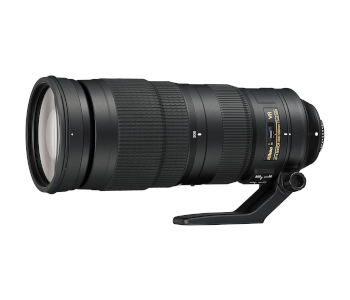 |
| Nikon AF-S NIKKOR 200-500mm f/5.6E ED VR |
| 4.4/5.0 |
| Dimensions: 4.3 x 4.3 x 10.5 in. |
| Image stabilization: Yes |
| Sharp throughout most of its focal range. |
| Check Amazon |
| Best Value |
|---|
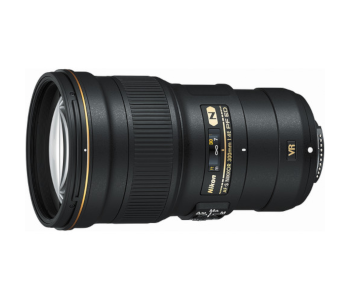 |
| Nikon AF-S NIKKOR 300mm f/4E PF ED VR |
| 4.5/5.0 |
| Dimensions: 3.5 x 3.5 x 5.8 in. |
| Image stabilization: Yes |
| Impressively light weight and portability. |
| Check Amazon |
| Top Pick |
|---|
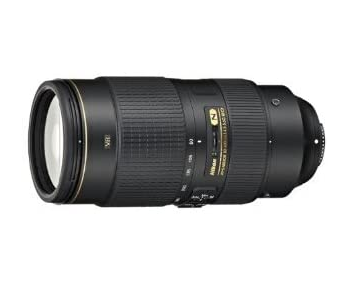 |
| Nikon AF-S NIKKOR 80-400mm f/4.5-5.6G ED VR |
| 4.8/5.0 |
| Dimensions: 3.8 x 3.8 x 8.0 in. |
| Image stabilization: Yes |
| Wide focal length increases versatility. |
| Check Amazon |
Nikon Wildlife Lenses Comparison Table
| Image | Product | Overall Rating | Image quality | Stabilization & focus speed | Build quality | Price |
|---|---|---|---|---|---|---|
 | Nikon AF-S NIKKOR 80-400mm f/4.5-5.6G ED VR | 4.8 | 4.8 | 4.8 | 4.7 | Check Price |
 | Nikon AF-S NIKKOR 300mm f/4E PF ED VR | 4.5 | 4.5 | 4.6 | 4.5 | Check Price |
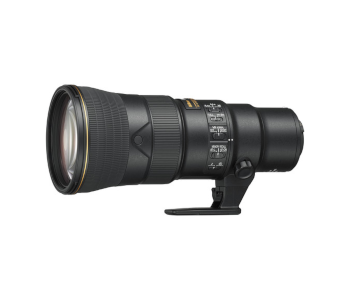 | Nikon AF-S NIKKOR 500mm f/5.6E PF ED VR | 4.8 | 4.9 | 4.8 | 4.8 | Check Price |
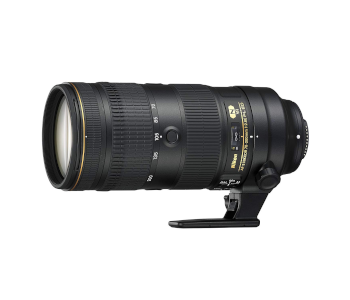 | Nikon AF-S NIKKOR 70-200mm f/2.8E FL ED VR | 4.6 | 4.7 | 4.5 | 4.5 | Check Price |
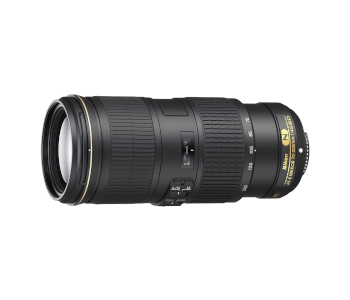 | Nikon AF-S NIKKOR 70-200mm f/4G ED VR | 4.4 | 4.3 | 4.4 | 4.3 | Check Price |
 | Nikon AF-S NIKKOR 200-500mm f/5.6E ED VR | 4.4 | 4.4 | 4.5 | 4.4 | Check Price |
1. Best Overall – Nikon AF-S NIKKOR 80-400mm f/4.5-5.6G ED VR
Editor’s Rating: 4.8/5
We’ve chosen the NIKKOR 80-400mm f/4.5-5.6G ED VR as our top pick for several compelling reasons. It has a wide focal range and is one of the most versatile lenses in Nikon’s lineup. It has effective image stabilization, isn’t too bulky for a telephoto zoom of this caliber, and all of its faults are easy to correct one way or another. It’s the perfect lens for all manner of wildlife photography and not a bad performer for portraiture either.
Overview of Features
The NIKKOR 80-400mm f/4.5-5.6G ED VR is a robust mi-sized telephoto lens with some heft you can still carry for hours without getting tired. Its front and back areas are made from metal, while the rest of the barrel is polycarbonate. There’s a rubber gasket on the mount that prevents dust from getting to the glass. The lens isn’t officially designated as being weather-sealed, but temperature extremes and light rain have no adverse effect on it.
A lack of image stabilization and terrible autofocus performance were the hallmarks of the NIKKOR 80-400mm f/4.5-5.6G ED VR’s 13-year older predecessor. Nikon managed to fix both with the addition of a Silent Wave Motor and the second generation of Vibration reduction. VR is particularly useful since it helps you take crystal-clear shots of far-away birds or animals without having to rely on monopods for stability.
Sharpness is one of the NIKKOR 80-400mm f/4.5-5.6G ED VR’s strong suits. Results are well in excess of what a first-class lens is supposed to deliver throughout the focal range. The only result that might disappoint is the lens’s corner sharpness at 400mm, f/5.6. Stepping down to f/8 or lower immediately yields much sharper results.
Most other optical properties are balanced as well. There’s around one percent of pincushion distortion starting at 200mm, but that’s negligible considering the subject matter. Both lateral and longitudinal chromatic aberration are kept under wraps, and you can mitigate ghosting & flare with the large included hood.
What We Didn’t Like
The NIKKOR 80-400mm f/4.5-5.6G ED VR shows strong vignetting at high apertures. You can correct it easily by using Lightroom. The falloff is gradual, so you might even want to keep it for artistic effect. The autofocus struggles with low light and keeps readjusting itself. Switching to manual helps, as does stepping down or introducing more light into the scene.
| Tech Specs |
|---|
| Dimensions: 3.8 x 3.8 x 8 in. |
| Weight: 3.5 lbs. |
| Minimum focal length: 80mm |
| Maximum focal length: 400mm |
| Maximum aperture: f/4.5 to 5.6 |
| Minimum aperture: f/32 to 40 |
| Minimum focus distance: 5.7 ft. |
| Angle of view: 30° 10′ to 6° 10′ |
| Image stabilization: Yes |
| The Pros |
|---|
| Wide focal length increases versatility |
| Effective image stabilization |
| Sharp across the board |
| Controlled CA and flare |
| The Cons |
|---|
| Strong vignetting at max aperture |
| Poor autofocus performance in low light |
2. Best Value – Nikon AF-S NIKKOR 300mm f/4E PF ED VR
Editor’s Rating: 4.5/5
Telephoto lenses designed for wildlife photography are usually heavy, but there are exceptions like the NIKKOR 300mm f/4E PF ED VR. It’s a featherweight model ideal for taking with you on trips and snapping pictures of exotic birds or other hard-to-reach animals. It has excellent autofocus, is among the sharpest lenses on review, and works well with teleconverters for even greater zoom possibilities.
Overview of Features
The first thing you’ll notice about the NIKKOR 300mm f/4E PF ED VR is its light weight. At 1.6 pounds, it’s two or even three times lighter than some rivals. There are two main reasons for this – an all-plastic body and a unique lens element. Don’t mistake the lack of metal in its body for shoddy construction as the NIKKOR 300mm f/4E PF ED VR can take a hit and doesn’t let dust or debris scratch its glass thanks to a rubber gasket on the mount. The lens has a unique Fresnel element that eliminates the need for several distortion-reducing lenses. It keeps the construction simple and light.
We were particularly satisfied with the NIKKOR 300mm f/4E PF ED VR’s autofocus responsiveness. It’s most evident when you’re trying to keep up with erratic bird movement and succeeding regularly. Vibration reduction augments the experience, allowing for quick & jerky adjustments or slow pans while compensating for hand movement.
Central sharpness is excellent throughout the NIKKOR 300mm f/4E PF ED VR’s aperture range, but that’s to be expected. We were more pleased with the well-defined corners at f/4 and near-center sharpness levels once you’re at f/8 and f/11. The lens resolves so well that pairing it with a 2x teleconverter still leaves enough detail for print-worthy snaps.
No telephoto lens can escape vignetting, but the NIKKOR 300mm f/4E PF ED VR impressively keeps it under 1.5 stops at f/4. Pincushion distortion is present but insignificant, and chromatic aberration doesn’t become problematic unless you pair the lens with teleconverters. The lens also produces a pleasant background blur.
What’s Bad About It?
The NIKKOR 300mm f/4E PF ED VR’s Fresnel element makes it susceptible to flares and ghosting. You’ll want to avoid shooting directly into sunlight as that significantly decreases contrast and makes everything look washed out. Vibration Reduction is useful, but only up to a point. Using it with shutter speeds slower than 1/20 secs introduces blurriness, so either turn it off or up the shutter speed.
| Tech Specs |
|---|
| Dimensions: 3.5 x 3.5 x 5.8 in. |
| Weight: 1.7 lbs. |
| Focal length: 300mm |
| Maximum aperture: f/4 |
| Minimum aperture: f/32 |
| Minimum focus distance: 4.6 ft. |
| Angle of view: 8° 10′ |
| Image stabilization: Yes |
| The Pros |
|---|
| Great value for the money |
| Impressively light weight and portability |
| Excellent autofocus accuracy |
| Sharp either alone or with teleconverter attached |
| The Cons |
|---|
| VR leads to blurriness at high shutter speeds |
| Fresnel element causes flare and loss of contrast when shooting close to a light source. |
3. Nikon AF-S NIKKOR 500mm f/5.6E PF ED VR
Editor’s Rating: 4.8/5
Birds are among the most challenging subjects for wildlife photography. They’re small, unpredictable, and likely to bolt as soon as they see you approach. That’s why you need a super-telephoto lens like the AF-S NIKKOR 500mm f/5.6E PF ED VR. It can capture tiny birds mid-flight with remarkable quality, focuses almost instantly without hunting in good light, and is exceptionally light for a lens of its type.
Overview of Features
The AF-S NIKKOR 500mm f/5.6E PF ED VR is a testament to Nikon’s engineering and design prowess. It weighs a mere 3.2 pounds while third-party competitors and Nikon’s pricier offerings weigh twice as much or more. Like our value pick, the 500mm lens has a Fresnel element that cuts down on the glass needed to achieve this. It is weather-sealed, made from a combination of metal & composite materials, and has a fixed tripod collar with a removable mount plate.
The lens’s autofocus is responsive and adaptable thanks to a series of buttons and switches. Four buttons are placed at 90-degree angles in front of the zoom ting. They’re used to set and quickly switch between fixed focus positions, allowing you to keep an eye on two trees and have either in focus as soon as a bird shows itself. You may also manually override the autofocus by switching to A/M mode, in which the focus ring becomes more sensitive for fine calibration. Vibration reduction lets you decrease the shutter speed and get blur-free images on cloudy days.
We were impressed with the AF-S NIKKOR 500mm f/5.6E PF ED VR’s consistently strong sharpness. The corners aren’t as sharp as the center at f/5.6, but they’re by no means soft. Switching to f/8 or f/11 practically eliminates any unevenness, giving you uniformly sharp results from corner to corner! You can comfortably shoot stepped down to f/16 in bright conditions, but going past that introduces expected softness due to diffraction.
The AF-S NIKKOR 500mm f/5.6E PF ED VR’s other optical properties are equally impressive. Its Fresnel element is better at dealing with chromatic aberration than the 300mm lens’s, so neither form of CA is an issue. You will experience flaring and artifacts when shooting into the sun, but these aren’t as abrasive and take deliberate action to appear. The strongest vignette is 1.2 stops darker than the center and easy to correct, while distortion is so small that it isn’t worth mentioning.
Are There Drawbacks?
The only downside to the AF-S NIKKOR 500mm f/5.6E PF ED VR is its steep price tag compared to other lenses on review. It’s still affordable if you put things into perspective, though; Nikon’s next-tier 500mm prime has an extra aperture stop but costs $10,000.
| Tech Specs |
|---|
| Dimensions: 4.2 x 4.2 x 9.3 in. |
| Weight: 3.2 lbs. |
| Focal length: 500mm |
| Maximum aperture: f/5.6 |
| Minimum aperture: f/32 |
| Minimum focus distance: 9.8 ft. |
| Angle of view: 5° |
| Image stabilization: Yes |
| The Pros |
|---|
| Superb uniform sharpness |
| Impressively lightweight and portable for a lens of its kind |
| No chromatic aberration or distortion |
| Minimal vignetting |
| The Cons |
|---|
| Expensive |
4. Nikon AF-S NIKKOR 70-200mm f/2.8E FL ED VR
Editor’s Rating: 4.6/5
The NIKKOR 70-200mm f/2.8E FL ED VR is one of Nikon’s most versatile lenses and our top general telephoto pick. It’s a solid choice for dedicated wildlife photographers, too, letting them capture beautifully blurred images of large, placid animals while offering excellent image quality at its telephoto end for more elusive subjects. It’s the lens to get if you often shoot in low light, want artistic wildlife images, or dabble in other kinds of photography.
Overview of Features
The NIKKOR 70-200mm f/2.8E FL ED VR is a finely-crafted lens whose build quality matches its considerable price. The body is made from hard, high-quality plastic and has a metal mount. It balances well on Nikon’s full frame cameras and comes with a tripod collar that shifts the camera & lens combo’s weight towards the front for easier handling. The zoom & focus rings are responsive and textured. They’re also reversed, which might be confusing at first.
Focusing is done internally and without rotating the outer glass elements, meaning that the NIKKOR 70-200mm f/2.8E FL ED VR has a fixed length and accepts ND filters. It has a similar four-button focus lock system to the NIKKOR 500mm f/5.6E PF ED VR and is driven by a Silent Wave motor. The lens is quiet enough not to scare birds or squirrels away but fast enough to deliver usable shots if they do decide to run thanks to two layers of Vibration Reduction.
The NIKKOR 500mm f/5.6E PF ED VR is among the sharpest lenses we’ve tested. Lesser models start well but become soft towards the limit of their focal range. This one maintains excellent sharpness even at 200mm. You’ll get the most out of it at 135mm and f/4 to f/5.6, but any focal length and aperture combination will produce print-worthy images as long as you don’t go over f/16.
Bokeh isn’t a factor to judge wildlife lenses by since they usually don’t have wide enough max apertures for pleasing results. The NIKKOR 500mm f/5.6E PF ED VR is different as f/2.8 allows for creamy and circular rings, not to mention blurry backgrounds that draw attention to the animal instead of its surroundings. You’ll notice some CA at 200mm and can correct for it in post.
What We Didn’t Like
The NIKKOR 500mm f/5.6E PF ED VR has two correctable flaws – strong vignetting when wide open and pincushion distortion. The corners are more than two stops darker than the center at f/2.8.The solution is to either lower the aperture or correct the images either in-camera for JPEGs or sing Lightroom for RAW files. Pincushion distortion is noticeable at 200mm and causes lines to bend inward.
| Tech Specs |
|---|
| Dimensions: 3.5 x 3.5 x 8 in. |
| Weight: 3.2 lbs. |
| Minimum focal length: 70mm |
| Maximum focal length: 200mm |
| Maximum aperture: f/2.8 |
| Minimum aperture: f/22 |
| Minimum focus distance: 3.6 ft. |
| Angle of view: 34° 20′ to 12° 20′ |
| Image stabilization: Yes |
| The Pros |
|---|
| Versatile lens with outstanding sharpness |
| Creates beautiful bokeh |
| Quick and adjustable autofocus |
| Great build quality |
| The Cons |
|---|
| Noticeable pincushion distortion at max focal length |
| Strong vignetting at f/2.8 |
5. Nikon AF-S NIKKOR 70-200mm f/4G ED VR
Editor’s Rating: 4.4/5
Nikon’s second 70-200mm lens on our list is considerably cheaper than the above model but barely las behind in terms of performance. Lower max aperture is its most significant compromise, leading to less pleasant bokeh and forcing you to choose either better-lit conditions or slower shooting speeds to get similar results. However, the NIKKOR 70-200mm f/4G ED VR is excellent otherwise.
Overview of Features
The first thing you’ll notice about the NIKKOR 70-200mm f/4G ED VR is how light it feels. This is great news for owners of smaller Nikon cameras since it balances well with them even if you don’t use a tripod. There’s no Fresnel element this time, yet the lens gets by with a sturdy plastic body and lack of weather sealing instead. You do get a metal mount and rubber gasket, so the lens is protected from dust.
Using the NIKKOR 70-200mm f/4G ED VR is straightforward since its grippy rings are arranged traditionally, and there are few physical controls. These govern how the focus behaves and either leave it up to the lens’s excellent judgment or let you step in and make fine adjustments manually. Vibration Reduction delivers on Nikon’s promise of five stops of image stabilization and allows you to drop the shutter speed if your subjects are still and in dim light.
The NIKKOR 70-200mm f/4G ED VR performs admirably in terms of central sharpness across its focal length and aperture range. Its corners are disappointingly soft at 70mm, f/4, but that’s a setting you’ll rarely be using as a wildlife photographer and can frame the shot to minimize the effect. Decreasing the aperture instantly improves the situation, and the lens reaches peak performance at f/8 or f/11, depending on focal length. 200mm sees no sudden drop in quality either.
Nikon’s Nano Crystal coating has a positive impact on the NIKKOR 70-200mm f/4G ED VR’s performance when shooting into the light. You can see a smattering of artifacts, but the colors and contrast are preserved well. Chromatic aberration never exceeds 0.5 pixels and is hard to see. Vignetting is present but manageable.
What’s Bad About It?
The NIKKOR 70-200mm f/4G ED VR exhibits considerable pincushion distortion at 200mm. In-camera processing or Lightroom can make short work of it, though. The lens would benefit from a tripod collar yet doesn’t come with one. Nikon sells the collar separately and at cost.
| Tech Specs |
|---|
| Dimensions: 3.1 x 3.1 x 7 in. |
| Weight: 1.9 lbs. |
| Minimum focal length: 70mm |
| Maximum focal length: 200mm |
| Maximum aperture: f/4 |
| Minimum aperture: f/32 |
| Minimum focus distance: 3.3 ft. |
| Angle of view: 34° 20′ to 12° 20′ |
| Image stabilization: Yes |
| The Pros |
|---|
| Almost as good as Nikon’s other 70-200mm lens but considerably cheaper |
| Sharp at 200mm |
| Controlled chromatic aberration and flare |
| Balanced and light |
| The Cons |
|---|
| Tripod collar is an expensive add-on |
| Strong pincushion distortion at 200mm |
6. Best Budget Option – Nikon AF-S NIKKOR 200-500mm f/5.6E ED VR
Editor’s Rating: 4.4/5
Do you need a super-telephoto lens but can’t justify the NIKKOR 500mm f/5.6E PF ED VR’s asking price? Switching to a zoom lens is what you need in that case, and the NIKKOR 200-500mm f/5.6E ED VR is your best, much less expensive bet. It’s a solid lens for enthusiasts looking to photograph birds, otters, and other wildlife from a distance.
Overview of Features
The NIKKOR 200-500mm f/5.6E ED VR is the heaviest lens on review. Part of the weight comes from several metal pieces in its body’s construction, while the rest is attributable to its complex glass arrangement. There are 19 elements in 12 groups, including three Extra-low Dispersion elements that increase the lens’s contrast and sharpness. Weather sealing is absent, but a gasket and fixed rear element keep dust at bay.
The lens has a Silent Wave Motor and is quick to snap to subjects in good light. Sunsets and dense foliage introduce hunting ad increase focus times but don’t make the NIKKOR 200-500mm f/5.6E ED VR for wildlife photography. Vibration Reduction adds extra confidence since it encourages you to up the shutter speed without fear of camera shake interfering with image clarity.
The NIKKOR 200-500mm f/5.6E ED VR is mostly a sharp performer. The center of the frame is well-defined when wide open and continues to be as you play with aperture and focal length settings. There’s a wide gap between it and the corners at f/5.6 that gets smaller as you decrease the aperture. The lens shines from 300 to 400mm when set to f/8 or f/11
Pleasant backgrounds and a lack of distortion are this lens’s strongest optical features. It produces elliptical bokeh at f/5.6 but creates great out-of-focus backgrounds that serve as an atmospheric backdrops for birds and animals alike. Flaring could be an issue if you introduce direct light into the scene but is otherwise absent.
Are There Drawbacks?
The NIKKOR 200-500mm f/5.6E ED VR’s overall resolution drops abruptly and noticeably once you reach 500mm. It’s by no means a soft lens at this focal length, but the decrease in quality is disappointing. Chromatic aberration is another issue to look out for when working at 500mm. Fortunately, it’s much less pronounced the shorter the focal length.
| Tech Specs |
|---|
| Dimensions: 4.3 x 4.3 x 10.5 in. |
| Weight: 5.1 lbs. |
| Mount: Nikon F |
| Minimum focal length: 200mm |
| Maximum focal length: 500mm |
| Maximum aperture: f/5.6 |
| Minimum aperture: f/32 |
| Minimum focus distance: 7.2 ft. |
| Angle of view: 12° 20′ to 5° |
| Image stabilization: Yes |
| The Pros |
|---|
| Constant max aperture |
| Sharp throughout most of its focal range |
| Effective image stabilization |
| Handles distortion and vignetting well |
| The Cons |
|---|
| Pronounced chromatic aberration and drop in sharpness at 500mm |
Contents
- Nikon Wildlife Lenses Comparison Table
- 1. Best Overall – Nikon AF-S NIKKOR 80-400mm f/4.5-5.6G ED VR
- Overview of Features
- What We Didn’t Like
- 2. Best Value – Nikon AF-S NIKKOR 300mm f/4E PF ED VR
- Overview of Features
- What’s Bad About It?
- 3. Nikon AF-S NIKKOR 500mm f/5.6E PF ED VR
- Overview of Features
- Are There Drawbacks?
- 4. Nikon AF-S NIKKOR 70-200mm f/2.8E FL ED VR
- Overview of Features
- What We Didn’t Like
- 5. Nikon AF-S NIKKOR 70-200mm f/4G ED VR
- Overview of Features
- What’s Bad About It?
- 6. Best Budget Option – Nikon AF-S NIKKOR 200-500mm f/5.6E ED VR
- Overview of Features
- Are There Drawbacks?

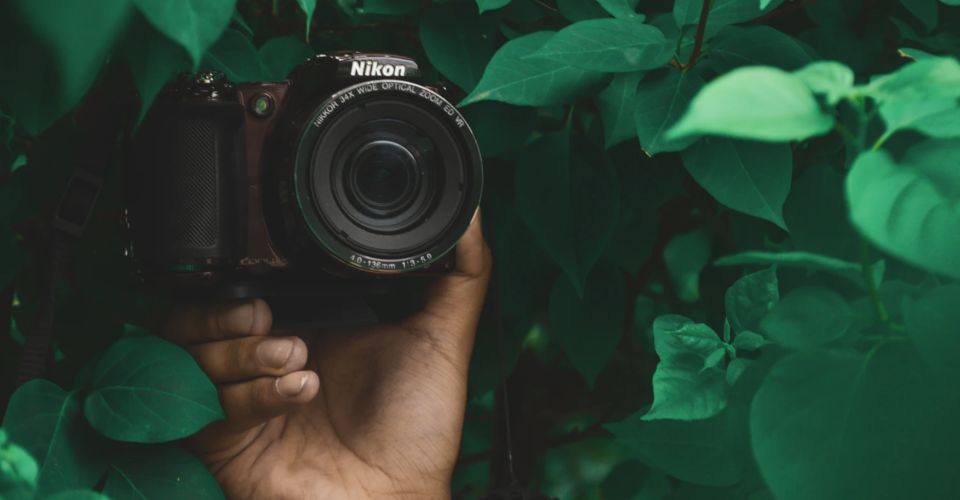
Really good site,thank so much for your time in writing the posts.